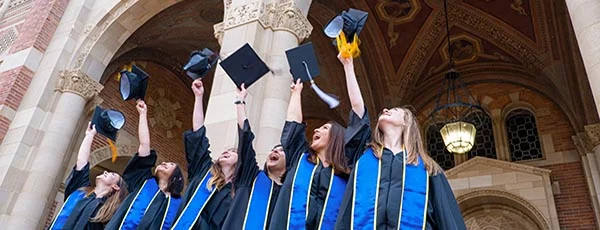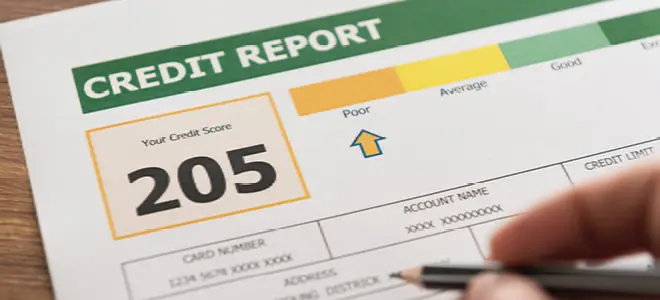Student Loan Forgiveness

- Government student loan forgiveness programs exist, including those for public service workers and military servicemembers.
- Student loan debt settlement is sometimes possible for private student loans, but not federal student loans.
- It's very difficult (but sometimes possible) to discharge student loans in bankruptcy.
Table of Contents
- What Is Student Loan Debt Forgiveness?
- Student Loans Forgiven With Income-Driven Repayment Plans
- Student Loan Forgiveness Programs by Occupation
- Student Loan Forgiveness for Total and Permanent Disability
- Forgiveness for Students at Fraudulent Institutions
- Debt Settlement for Student Loans
- How to Negotiate Student Loan Settlement
- Pros and Cons of Student Loan Settlement
- Federal vs. Private Student Loan Settlement Options
- What About Bankruptcy and Student Loans?
- Getting Free of Student Loan Debt
Several government programs offer student loan forgiveness to qualifying borrowers. These programs aren’t available to everyone, as there’s no such thing as universal government student loan forgiveness. But if you’re currently repaying student debt, it’s worth finding out if you qualify for a forgiveness program.
What Is Student Loan Debt Forgiveness?
Student loan forgiveness wipes some or all of what you owe off the books. This kind of debt forgiveness applies only in specific cases and, in most instances, only to federal student loans.
Government programs that apply to federal student loans are covered below, but private student loans rarely have debt forgiveness programs. Some lenders may offer private student loan debt relief, but this varies depending on the lender. There are other options that could potentially work with private student loans, including debt relief.
If you aren’t sure what kind of student loan you have, log in to StudentAid.gov and check the My Aid section. Loans listed in that section are federal student loans. Or you can contact your loan servicer and ask.
Student Loans Forgiven With Income-Driven Repayment Plans
One benefit of federal student loans is the income-driven repayment (IDR) plan. An IDR plan could make repayment more affordable because the payment is based on your income and family size. You must recertify your income and family size every year you’re on this government debt relief plan, so your loan servicer can recalculate your payment amount.
An IDR plan ensures that your student loan payments don’t take up too much of your income. There are multiple IDR plans available, and payments range from 10% to 20% of discretionary income.
An IDR plan could lead to forgiveness of a portion of your student loan. Once you've made qualifying payments toward an IDR plan for 20 or 25 years (depending on the specifics of your loan and IDR plan), any remaining loan balance may be forgiven.
Student Loan Forgiveness Programs by Occupation
There are a few federal loan forgiveness programs designed to reward people for pursuing certain occupations after they get out of school. Here are some examples.
Public Service Loan Forgiveness
Public Service Loan Forgiveness (PSLF) is available to eligible government and nonprofit employees.
If you’re a full-time employee of a qualifying organization, you may be eligible to have your remaining loan balance forgiven. This can happen after you've made 120 qualifying payments (at least 10 years' worth of monthly payments). You must pay your student loans through a qualifying repayment plan.
Depending on your income, the amount you owe, and the payment amount you qualify for, it’s possible that you might fully pay off your loan before you qualify for any debt forgiveness.
Teacher loan forgiveness
This program provides a limited amount of federal student loan debt forgiveness for borrowers who teach in schools that serve low-income families.
Teacher loan forgiveness (TLF) can provide up to $17,500 in student debt relief. Eligibility requirements include:
Teaching in elementary or secondary schools or educational service agencies that serve low-income families
Completing five full, consecutive school years of teaching at a qualifying school.
Note that you can’t receive a benefit under both the TLF program and the PSLF program for the same period of teaching service.
Student debt forgiveness for military service
People who serve in the military may qualify for the PSLF program described above. In addition, the government offers a variety of assistance programs and repayment plans as a reward for military service.
Some examples include:
A cap on your loan interest rate during periods of active duty
A 0% interest rate for up to 60 months while serving in a hostile area
Postponement of repayment during and immediately after active duty
Repayment of your loan by the Department of Defense in certain cases
Loan forgiveness for borrowers with a service-connected disability
Eligibility is based on specific circumstances. Visit the Federal Student Aid website for more information on student loan benefits for military members.
Segal AmeriCorps Education Award
This is student financial assistance for people who complete a term of service within a 12-month period in a qualifying Americorps program. These include:
AmeriCorps NCCC
AmeriCorps State and National
AmeriCorps VISTA
This award isn't technically loan forgiveness. Instead, it's an award grant that could be used to repay an education loan or for future academic expenses.
Student Loan Forgiveness for Total and Permanent Disability
If you have a permanent disability that severely limits your ability to work, you could be eligible for a total and permanent disability (TPD) discharge (loan forgiveness). Physical and mental disabilities both qualify. To prove that you meet the requirements for a TPD discharge, you must provide documentation from one of three sources:
The U.S. Department of Veterans Affairs (VA)
The Social Security Administration (SSA)
An authorized medical professional
Once you receive a TPD discharge, you don’t need to continue repaying William D. Ford Federal Direct Loan Program loans, Federal Family Education Loan (FFEL) Program loans, or Federal Perkins Loans.
There is a three-year post-discharge monitoring period for TPD discharges through SSA documents or a medical professional’s certification. The monitoring period isn’t required for TPD discharges based on documentation from the VA.
Forgiveness for Students at Fraudulent Institutions
Many student borrowers were victimized by schools that made fraudulent claims about their degree programs. In some cases, those programs left students with education loans to repay, but without the earning potential to repay them.
People in that situation may be eligible to make a borrower defense to repayment claim. This is a possible path to debt forgiveness for victims of fraudulent institutions.
These claims are granted case by case. Also, the government has granted blanket relief to groups of students where fraud affected a large number of people.
Here are some of the schools whose former students might be eligible for debt relief via a borrower defense to repayment claim:
Ashford University
Corinthian Colleges
DeVry University
Globe University
ITT Technical Institute
Marinello School of Beauty
Minnesota School of Business
The Art Institutes
Westwood College
Debt Settlement for Student Loans
Debt settlement means negotiating to have a creditor accept less than the full amount owed. You can try negotiating debt for yourself, or hire someone to do it for you. Debt settlement is sometimes an option for private student loans, but not for federal student loans.
When can you settle student loan debt?
Your student loans must be in default for debt settlement to be an option. With private student loans, the time to default depends on the lender. In most cases, private loans are in default when they’re 90 to 120 days past due.
Federal student loans are in default when they’re 270 days past due. At this point, there may be debt compromise options available, although borrowers rarely qualify.
One of the downsides to debt settlement is that you’re more likely to succeed if you’ve already defaulted on your loan payments. Default and debt settlement are likely to lower your credit score. Even with this drawback, debt settlement could be the best move for getting free of private student loans and other debt. If you’re having trouble keeping up with your payments, you may want to try to negotiate a settlement or have a professional debt settlement company handle it for you.
How student loan debt settlement works
Since every situation is different, it’s impossible to guarantee that you’ll be able to settle student loan debt at all, or for any specific amount. As far as a general guideline goes, there are multiple reports online from people who settled private student loans for 50% or less of the outstanding amount. On the high end, debtors have reported getting 80% to 90% of their private student loans forgiven.
When you’ve agreed to a debt settlement, the lender or collection agency may expect a lump-sum payment. You might not be able to get a payment plan because if you can afford a payment plan, the lender could assume that you can afford to keep making your payments. For this reason, you should only negotiate a settlement if you have the money to pay.
The IRS considers forgiven debt to be taxable income. However, if the value of your debts is bigger than the value of your assets (the things you own), you’re insolvent and might not owe debt settlement taxes.
How to Negotiate Student Loan Settlement
Once you’ve decided that your best option is to settle your student loans, follow these five steps to negotiate a settlement.
1. Determine if your loans are eligible
First, check if you have private or federal student loans. If the loans are listed in your account at StudentAid.gov, they are federal loans, which are almost never negotiable. If your loans are through a private lender, then you may be able to negotiate a settlement offer.
Your loans also need to be in default or near default. Lenders typically won’t negotiate with you if you’ve been paying your loans on time. They’re only open to a settlement if it’s clear that you’re unable to make your payments.
2. Gather financial hardship documentation
If you show your lender that you’re going through a legitimate financial hardship, that could help you work out a student loan settlement. Gather documentation that shows why you can’t make your student loan payments. Here are some examples of financial hardship documentation:
Bank statements showing your income and expenses
A termination letter or unemployment statement if you lost your job
Pay stubs if your hours at work have been cut
Tax returns
Medical bills
Records of your monthly expenses
3. Contact the loan servicer or collection agency
Find out whether your original loan servicer or a collection agency now owns your debt. If it’s a collection agency, make sure to have the agency provide written proof that it owns the debt before you discuss anything.
You may be able to contact the loan servicer or collection agency by phone, email, or mail. Explain that you’re going through a financial hardship but would like to address your student loan debt.
4. Let them make the first offer
See what the creditor is willing to offer before you mention any specific settlement amounts. You have the advantage if the other side sets the starting point. You can use that information to come up with a counter-offer and hopefully settle your debt for as little as possible.
A good way to draw out an offer is to ask open-ended questions after explaining your financial situation. For example, “Would you be willing to accept a settlement?”, “What are my options?”, or “How much would I need to pay to settle this debt?” If the creditor tries to pressure you to say a number, explain that you want to see what your options are and it would help to know how much a settlement would cost.
5. Get everything in writing before you pay
It’s a huge relief to agree on a loan settlement you can afford. But before you pay anything, get a written agreement with all the terms of the settlement. The agreement should include:
The settlement amount
The due date for the payment
Confirmation that your debt is considered paid in full once you’ve made the settlement payment
Pros and Cons of Student Loan Settlement
If you’re unsure about whether student loan settlement is right for you, knowing the pros and cons could help.
Pros of student loan settlement
You could reduce your debt. If the lender agrees to a debt settlement, you could pay off your student loan for less than what you owe.
You get out of default. Once you’ve settled your debt, the account is closed and considered satisfied. The lender won’t be calling or emailing you to collect payment anymore.
You avoid a court case and wage garnishment. Lenders and collection agencies may eventually file a lawsuit for unpaid debt. If successful, they could get a court order to garnish your wages or bank account. Debt relief helps you avoid this situation.
Cons of student loan settlement
You need money saved to pay the settlement. A debt settlement is often a lump-sum payment. Once you’ve agreed to a deal, the lender will want the money quickly.
You may owe taxes on the discharged debt. When you settle a debt for less than what you owe, the IRS considers the amount you saved to be taxable income. You could avoid debt settlement taxes if you meet the IRS insolvency guidelines, though.
Your credit score could drop. Missed payments and defaulting on a debt hurt your credit, and settling your debt could also affect your credit score. But debt settlement can still be worth it to get out of debt, as you can always take steps to rebuild your credit once you’re financially stable.
A settlement agreement isn’t guaranteed. You can’t settle federal student loans, and even private student loan settlement depends on the lender. If the lender’s not willing to negotiate, then you’ll need to find another way to deal with your debt.
Federal vs. Private Student Loan Settlement Options
Student loan settlement options depend largely on the type of loan you have. Here’s a detailed look at federal and private student debt settlement.
Federal student loan settlement
As mentioned earlier, federal student loan settlement isn’t really an option. Various forgiveness and repayment programs for federal student loans already exist. But debt settlement, where you negotiate down what you owe, isn’t available with federal student loans.
The federal government has stronger collection methods than private lenders. It can garnish your wages without a court order and withhold other forms of income, such as state and federal income tax returns. With these collection options, the federal government has less reason to negotiate with you. In addition, federal law determines which, if any, debt forgiveness options are available.
In rare cases, debtors may qualify for a federal debt compromise program. The Department of Education has set guidelines on the compromise options available. These guidelines are confidential. The government notes that publicizing the options could enable borrowers to pay less than they can afford. Various sources have reported that the standard options are:
Pay the current principal balance and all accrued interest, waiving collection fees
Pay the current principal balance and half of accrued interest
Pay at least 90% of the current principal balance and all accrued interest
None of those compromise options reduce your debt by that much.
The Fresh Start Program was another debt relief option for federal student loans. This program ended on Oct. 2, 2024.
Private student loan settlement
You may be able to settle private student loan debt. Private lenders have more leeway to make a deal. They aren’t restricted on the terms they can offer like federal loan servicers are with loan forgiveness and compromise programs. If a private lender doesn’t expect to recover the full amount of your debt, it could accept a settlement to at least get something.
Private lenders may also eventually sell debts to a collection agency. Debt collection agencies normally buy debt at a steep discount, often for pennies on the dollar. Because they don’t pay much for debt, they’re often willing to accept debt settlement offers.
You can try to settle debt on your own with the lender or collection agency. Or, you can enlist a debt relief program that has experience dealing with creditors and negotiates on your behalf.
What About Bankruptcy and Student Loans?
Traditionally, student loans have been excluded from bankruptcy proceedings. You could discharge other types of debt in bankruptcy, but not student debt. While that has changed in recent years, it’s still difficult to discharge student loans in bankruptcy compared to other debts.
To discharge student loan debt, you must file a separate action called an adversary proceeding during the bankruptcy process. In the adversary proceeding, you request that the court discharge your student loans because repayment would cause undue hardship.
Here’s how bankruptcy courts determine whether repaying student loans would lead to undue hardship:
If you’re forced to repay the loan, it would prevent you from maintaining a minimal standard of living.
This hardship would be likely to continue for an extended portion of the repayment period.
You made a reasonable effort to keep up with payments before filing bankruptcy.
The bankruptcy court may decide to fully discharge your student loans, meaning you don’t need to repay them anymore. It could also forgive a portion of your student loans, which is known as a partial discharge. Or, the court could adjust the loan terms so that you can continue making payments.
Bankruptcy stays on your credit report for seven to 10 years. Because of the filing fees and the impact bankruptcy has on your credit, it often only makes sense if you have a large amount of debt and debt forgiveness and debt relief programs aren’t options.
Getting Free of Student Loan Debt
You have options for getting rid of student loan debt, even if you took out large loans to pay for school. There are plenty of federal student loan forgiveness programs you may qualify for, including income-based plans that ensure your payment amount isn’t too much to handle. For private student loans, you could ask your lender to adjust the terms of your payment plan, or you could give debt settlement a try.
People just like you are seeking debt relief in Pennsylvania and across the country. The first step is the most important one.
Insights into debt relief demographics
We looked at a sample of data from Freedom Debt Relief of people seeking debt relief during October 2025. The data provides insights about key characteristics of debt relief seekers.
Credit utilization and debt relief
How are people using their credit before seeking help? Credit utilization measures how much of a credit line is being used. For example, if you have a credit line of $10,000 and your balance is $3,000, that is a credit utilization of 30%. High credit utilization often signals financial stress. We have looked at people who are seeking debt relief and their credit utilization. (Low credit utilization is 30% or less, medium is between 31% and 50%, high is between 51% and 75%, very high is between 76% to 100%, and over-utilized over 100%). In October 2025, people seeking debt relief had an average of 74% credit utilization.
Here are some interesting numbers:
| Credit utilization bucket | Percent of debt relief seekers |
|---|---|
| Over utilized | 30% |
| Very high | 32% |
| High | 19% |
| Medium | 10% |
| Low | 9% |
The statistics refer to people who had a credit card balance greater than $0.
You don't have to have high credit utilization to look for a debt relief solution. There are a number of solutions for people, whether they have maxed out their credit cards or still have a significant part available.
Collection accounts balances – average debt by selected states.
Collection debt is one example of consumers struggling to pay their bills. According to 2023, data from the Urban Institute, 26% of people had a debt in collection.
In October 2025, 30% of debt relief seekers had a collection balance. The average amount of open collection account debt was $3,203.
Here is a quick look at the top five states by average collection debt balance.
| State | % with collection balance | Avg. collection balance |
|---|---|---|
| District of Columbia | 23 | $4,899 |
| Montana | 24 | $4,481 |
| Kansas | 32 | $4,468 |
| Nevada | 32 | $4,328 |
| Idaho | 27 | $4,305 |
The statistics are based on all debt relief seekers with a collection account balance over $0.
If you’re facing similar challenges, remember you’re not alone. Seeking help is a good first step to managing your debt.
Manage Your Finances Better
Understanding your debt situation is crucial. It could be high credit use, many tradelines, or a low FICO score. The right debt relief can help you manage your money. Begin your journey to financial stability by taking the first step.
Show source
Author Information

Written by
Lyle Daly
Lyle is a financial writer for Freedom Debt Relief. He also covers investing research and analysis for The Motley Fool and has contributed to Evergreen Wealth and Monarch Money.

Reviewed by
Kimberly Rotter
Kimberly Rotter is a financial counselor and consumer credit expert who helps people with average or low incomes discover how to create wealth and opportunities. She’s a veteran writer and editor who has spent more than 30 years creating thousands of hours of educational content in every possible format.
Do student loans go away after 20 years?
Student loans don’t go away after 20 years except with certain types of income-driven repayment (IDR) plans. With an IDR plan, after you’ve made payments for 20 or 25 years (depending on the plan), any remaining balance is forgiven.
Can private student loans be forgiven?
Private lenders normally don’t forgive student loans, although some lenders may do so in rare circumstances. There aren’t any formal forgiveness programs with private student loans like there are with federal student loans.
Can I make my private student loans federal?
No, you can’t turn private student loans into federal student loans. You can do the opposite, and refinance federal student loans with private student loans. This may be a good decision if you can get a lower interest rate from a private lender.
How much does student loan settlement cost?
The cost of student loan settlement is the settlement amount you negotiate with the lender. If you use a debt relief service, then you’ll also pay its service fees.
Can you settle student loans that aren't in default?
No. In almost all cases, lenders will only negotiate with you after you’ve defaulted on your student loans.
How long does the settlement process take?
The debt settlement process usually takes between 24 and 48 months. It doesn’t always take that much time, and you could possibly settle student loans within a few months. The amount of time depends on several factors, including your lender and the current status of your loans.
Will settled student loans still appear on my credit report?
Yes, settled student loans still appear on your credit report. The lender reports the debt as settled for less than the full balance. Settled debt can stay on your credit history for up to seven years.
What happens to forgiven debt at tax time?
Forgiven debt is treated as taxable income. You need to include forgiven debt on your tax return and pay income taxes on it. However, if your debts exceed your assets, you could qualify for the insolvency exclusion. This exclusion allows you to avoid paying taxes on forgiven debt.


